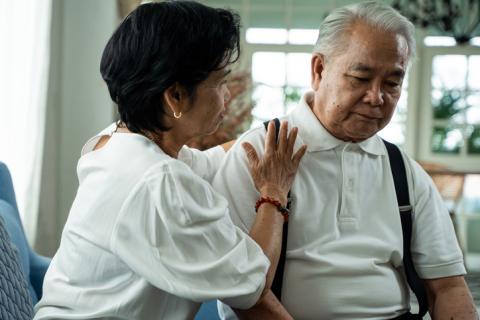More Than Ever Before, Family Caregivers Need Our Help
The National Alliance for Caregiving (NAC) reports that today, 53 million people in the U.S. are providing unpaid care for older or disabled relatives or friends. It is a labor of love—and it’s valued at billions of dollars each year.
According to a 2020 study conducted by the University of Southampton in the U.K., “Such care can save governments enormous health and social care costs.” But the research team also highlighted “the potential that caring has to impact on national economic productivity, if it comes at the expense of the quality or quantity of work that those who provide care are able to carry out.”
The team found that the burden was indeed uneven. “Those providing the highest levels of care were more likely to be disadvantaged in terms of both social class and education level compared to those without any caring responsibilities,” they noted. “Caregivers were also more likely to be unemployed or retired, and amongst those who do work, were more likely to be working part-time.”
The study also looked at the health impacts of caregiving, reporting that “those who provided care for more than 20 hours per week were more likely to suffer from chronic obstructive pulmonary disease (COPD) and to experience musculoskeletal pain, depression and sleep problems.”.
The NAC confirms this impact, noting that 23% of family caregivers say their health has suffered due to their caregiving responsibilities. And in August 2020, the Centers for Disease Control and Prevention (CDC) also released a study on the health implications of caregiving. “Although providing informal care can bring many benefits,” they said, “it is also a source of a chronic stress. Caregivers might experience this stress because of the physical demands of caregiving, the challenges of balancing work and other responsibilities with the caregiving role, the trouble with managing problematic behaviors of the people they care for, or the emotional difficulty of watching a loved one’s health decline.”
They say this stress can affect a caregiver’s immune system. And caregivers are less likely to be physically active, to attend medical appointments, or to manage their own chronic health conditions. The team concluded: “Together, these physiological and behavioral changes increase the likelihood of developing new physical and mental health conditions.” And this, of course, raises the likelihood that the caregivers will, in turn, require care.
COVID-19 complicates the lives of caregivers
Experts also say that the 2020 pandemic has made things even more difficult for caregivers. Many are trying to work and take care of children from home—while the elder care they provide as increased by over one-third. Many suffer severe emotional distress as circumstances make it unsafe to spend in-person time with their loved one. Others have chosen to “bubble” with elderly loved ones, voluntarily reducing their own activities. The Rosalynn Carter Institute for Caregiving reports that 82% of caregivers are feeling more stressed today, and most say their sources of help have diminished considerably.
And consider that COVID-19 has left it its wake thousands of people newly in need of care. We now know that recovery can be a long process, and many families are called upon to help. Kaiser Health News recently reported that while COVID survivors who spent time in the ICU could suffer from long-term trauma, called post-intensive care syndrome (PICS), family caregivers also are affected. Many are suffering depression, sleep loss and stress-related ailments—made all the worse because they were unable to be by their loved ones’ side during the hospitalization. Experts have named this PICS-Family syndrome.
How can we support caregivers during this trying time?
Family members of primary caregivers should have a family meeting right away. Often, a single family member has gradually assumed the lion’s share of care for an older or disabled loved one. It’s time for a more equitable arrangement! Get on a call or a telechat to brainstorm. Arrange to stay with the person if that is safe, or offer financial assistance for respite care. Help locate support resources in the community. Hire an aging life care professional (geriatric care manager) to facilitate the discussions and locate services.
Friends of caregivers, too, should offer their help. It takes a village! Drop off groceries, offer to pick up prescriptions—and be sure to wear a mask and practice social distancing. You can help fight isolation and create a sense of connection for caregiver friends. Caregivers often report that when a senior is living with physical or cognitive health challenges, friends sometimes drift away. During the pandemic, the situation is even worse. Check in frequently, with practical help—or just because.
Employers should be understanding of the needs of caregivers. During the pandemic, there’s been a lot of attention on the needs of parents. Employees providing elder care, too, need help. Companies are encouraged to offer increased flextime, work-from-home options, caregiver referral and assistance programs and other supports and accommodations. Research shows this makes for more loyal, productive employees, too!
Everyone should advocate, advocate, advocate. Communities are focusing on the needs of vulnerable elders—but aren’t thinking as much about the health and well-being of caregivers. Speak up. Let your federal, state and local representatives know that caregiver support is an important priority. Take part in caregiver advocacy groups. Share what you’ve learned about the inequities caregivers face. Caregivers aren’t big on tooting their own horns or marching—they’re too busy! But we can all share the load. Most of us will benefit later from these efforts, as caregivers, care receivers, or most likely both.
